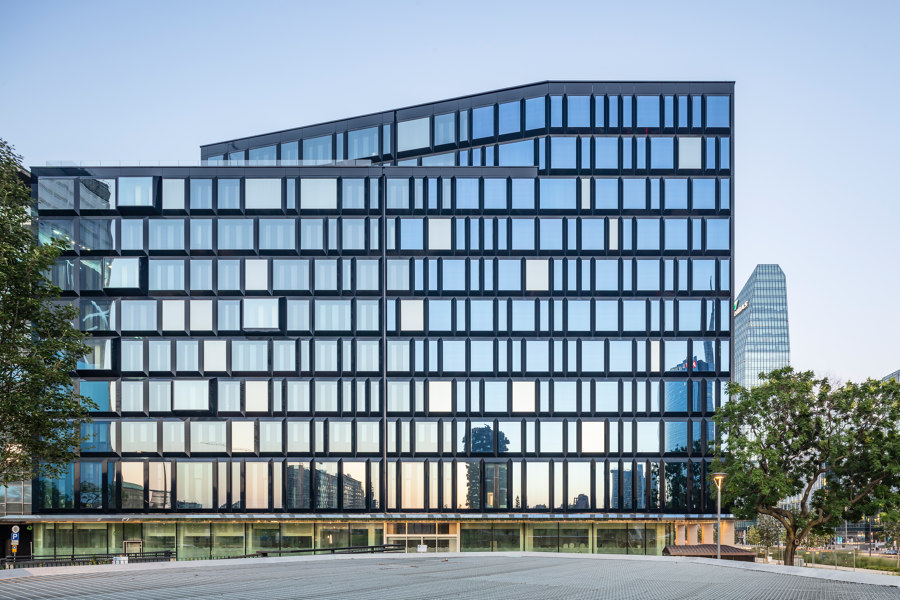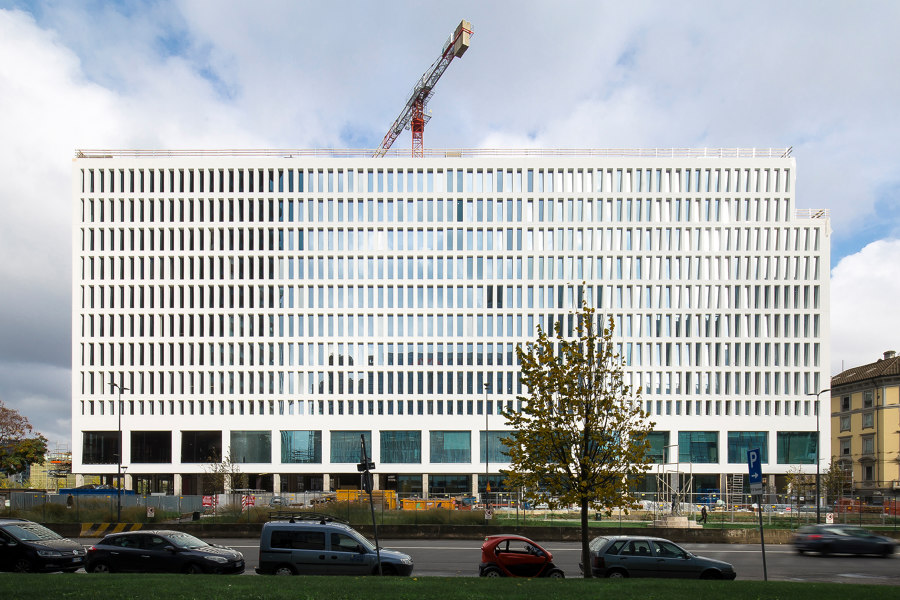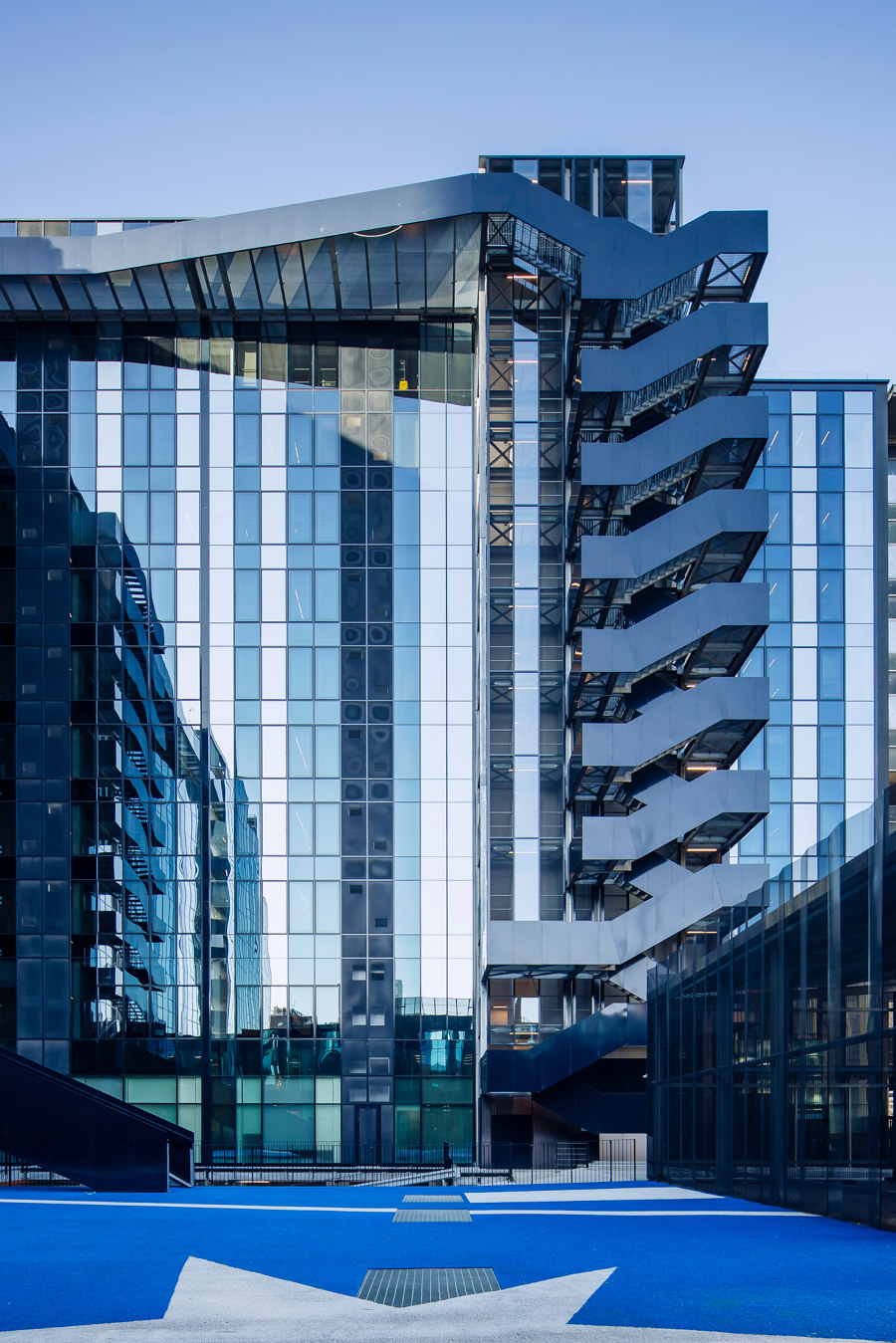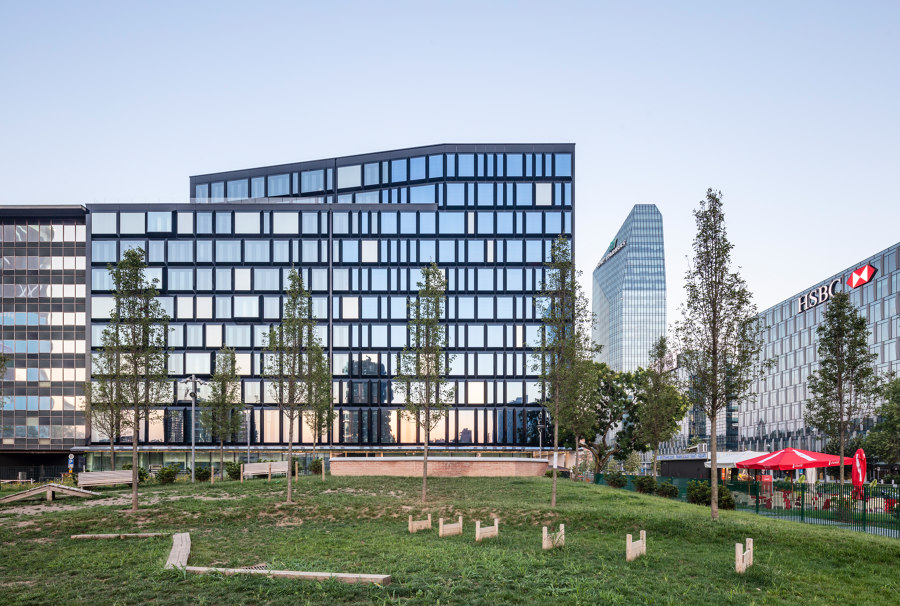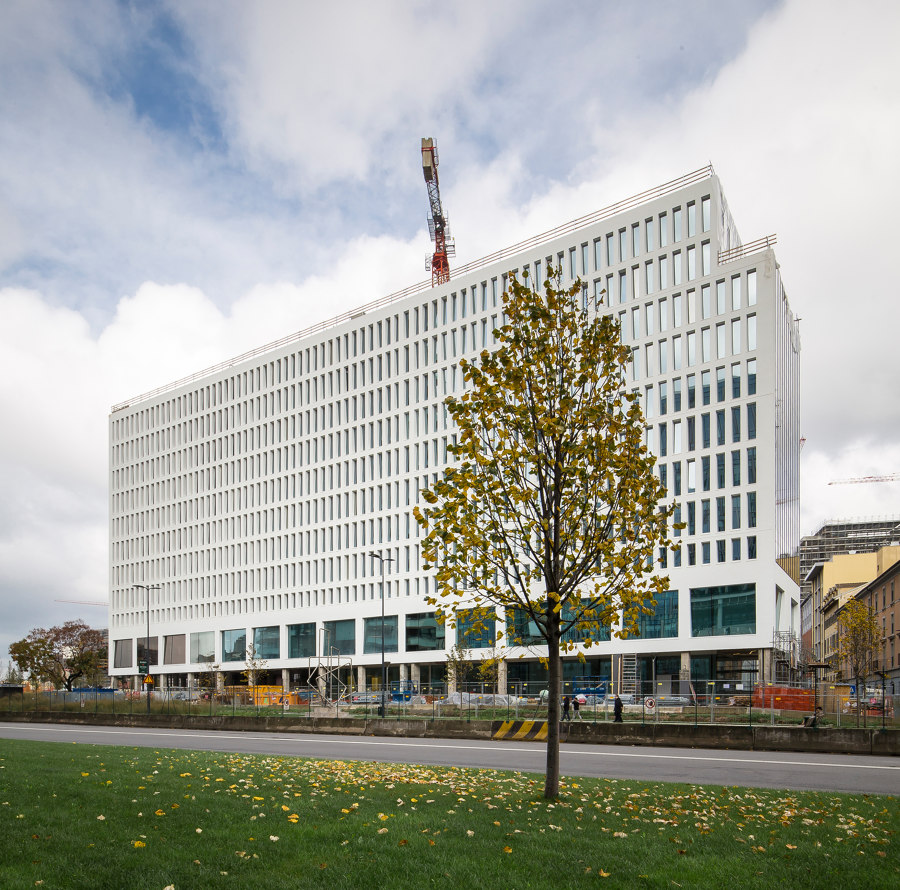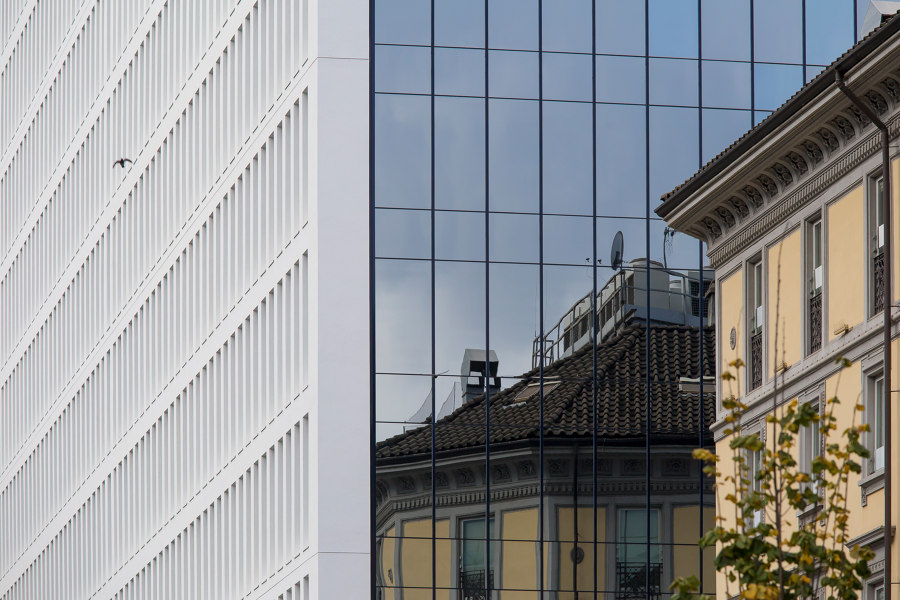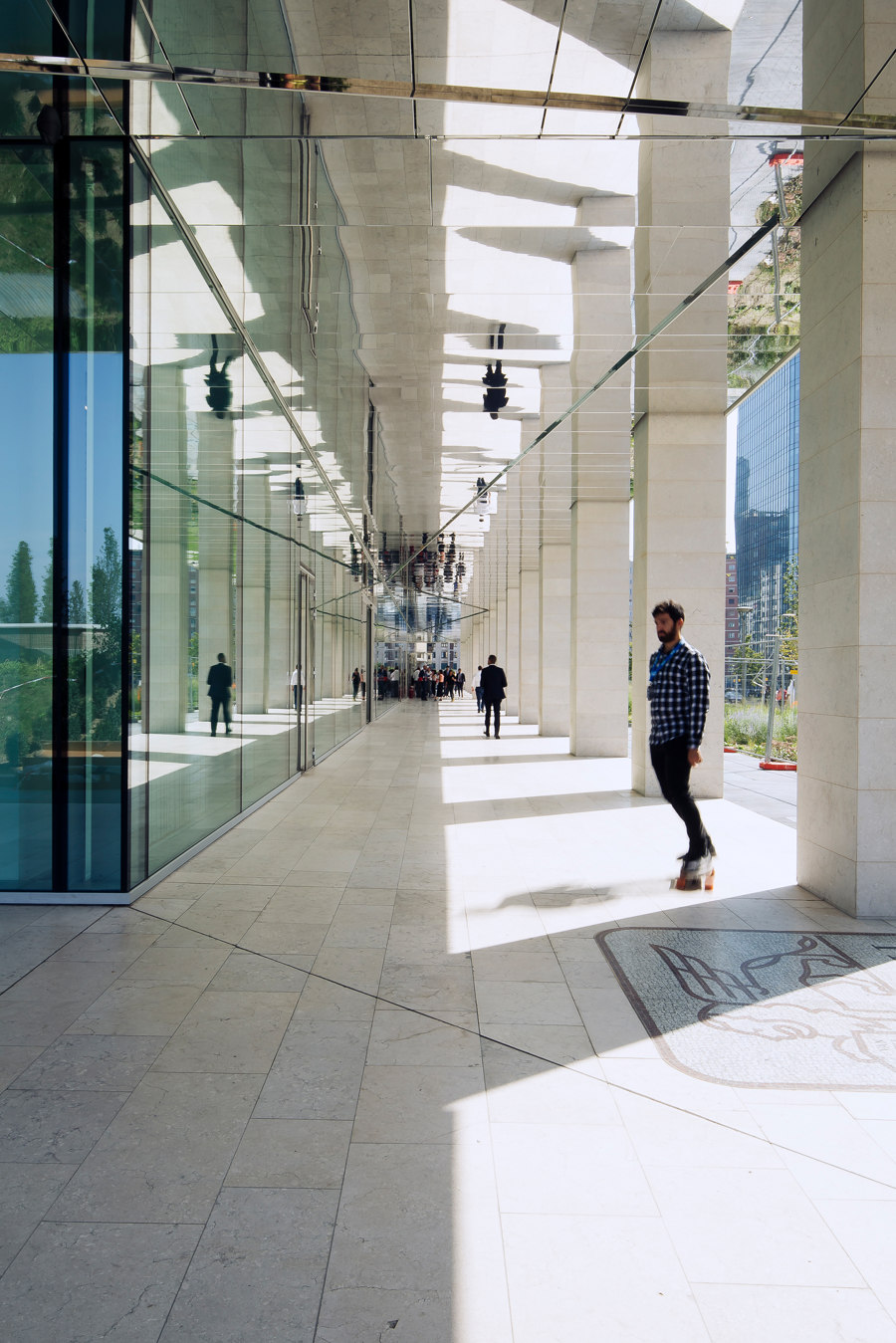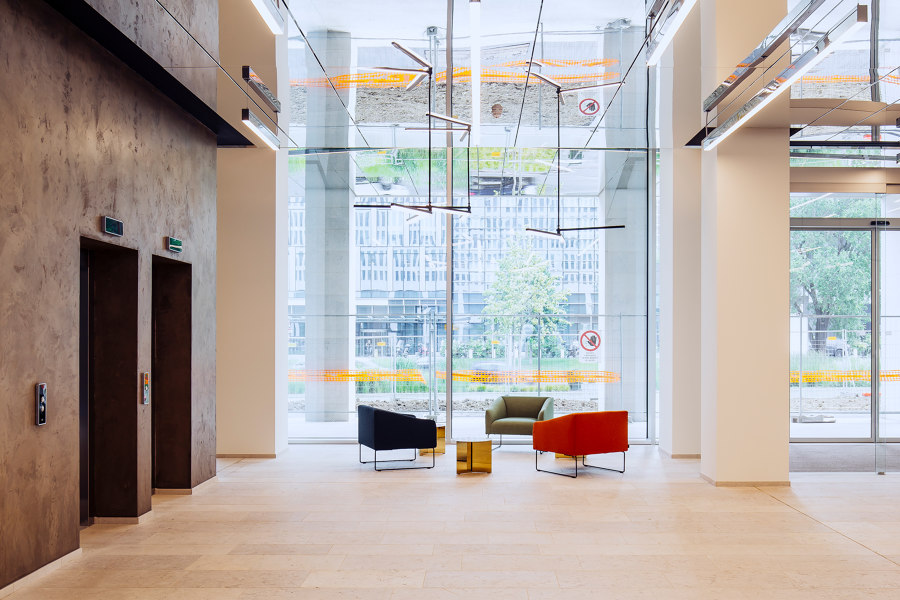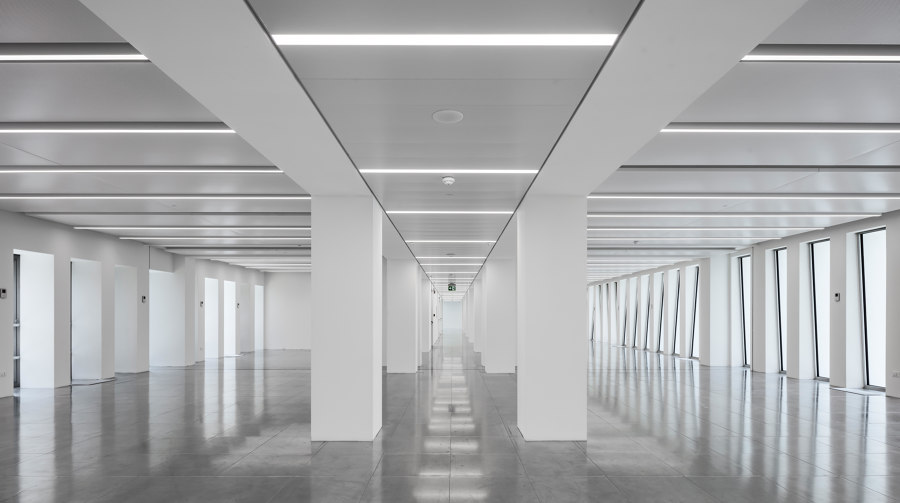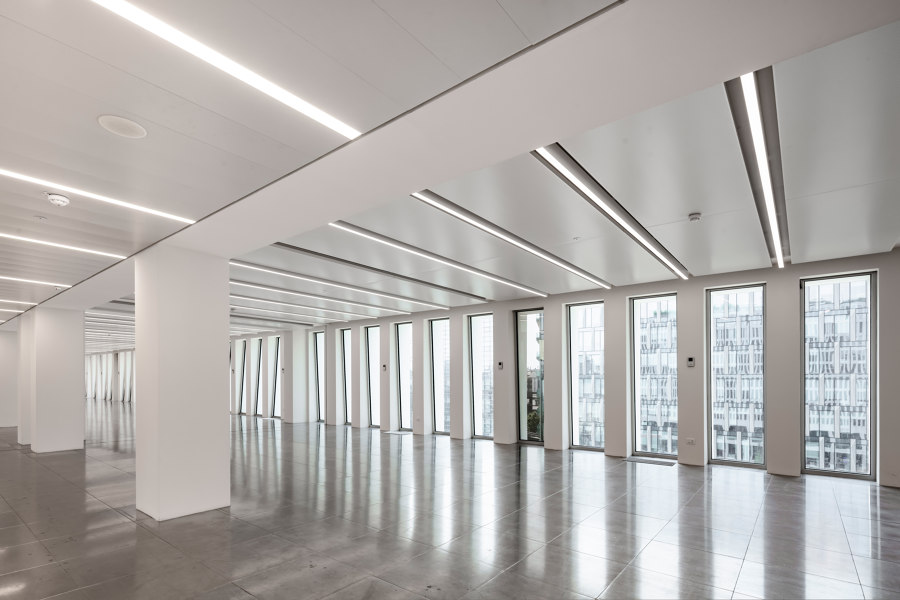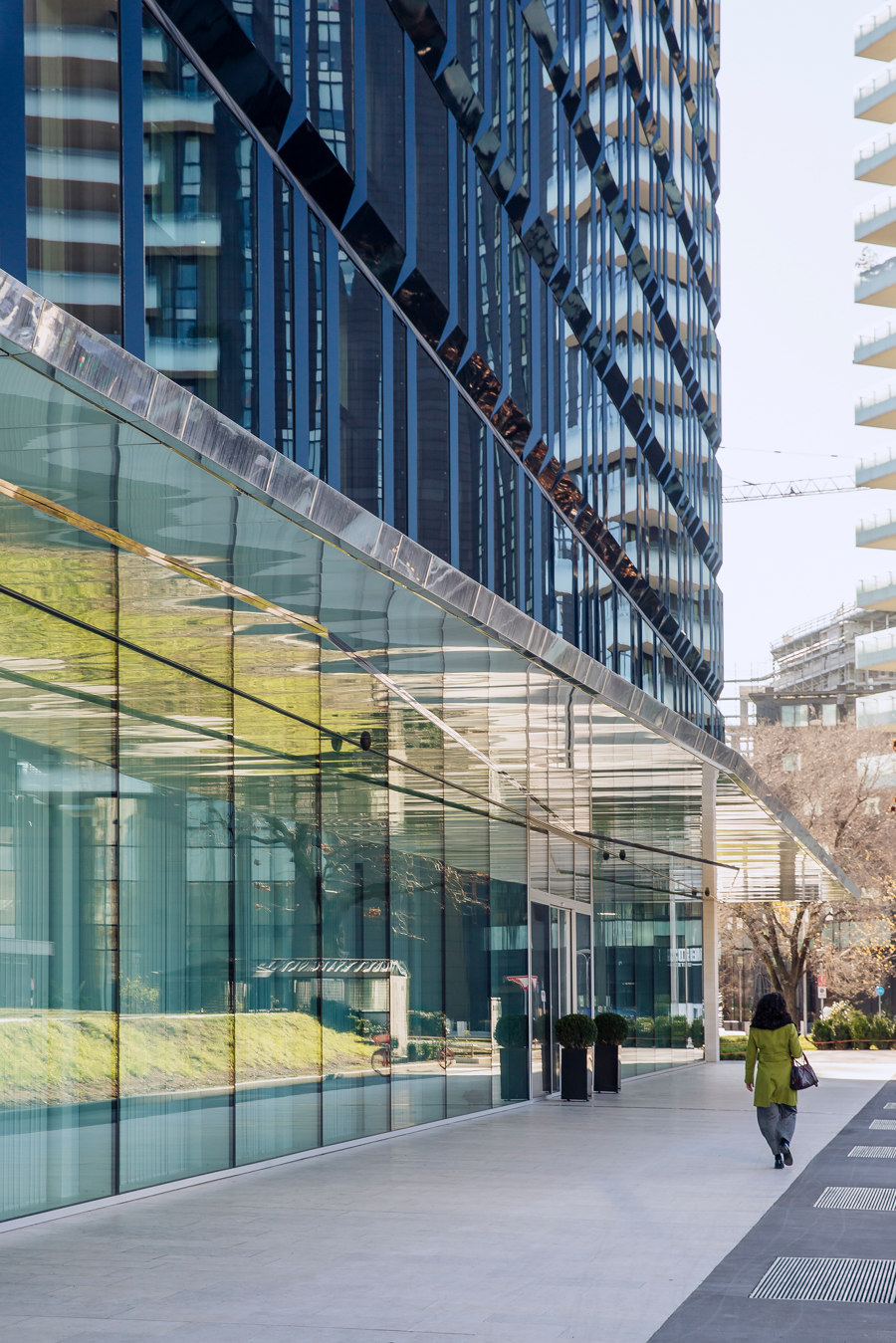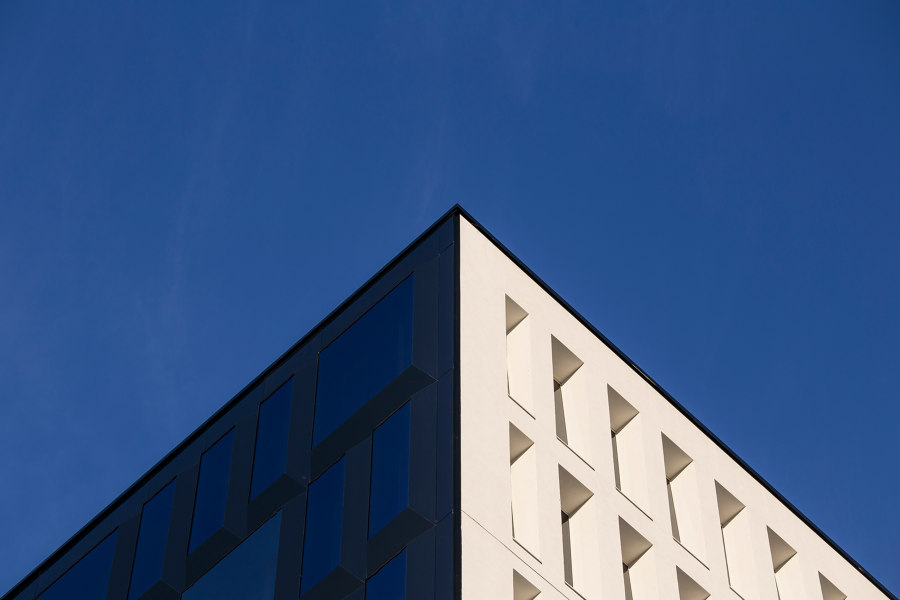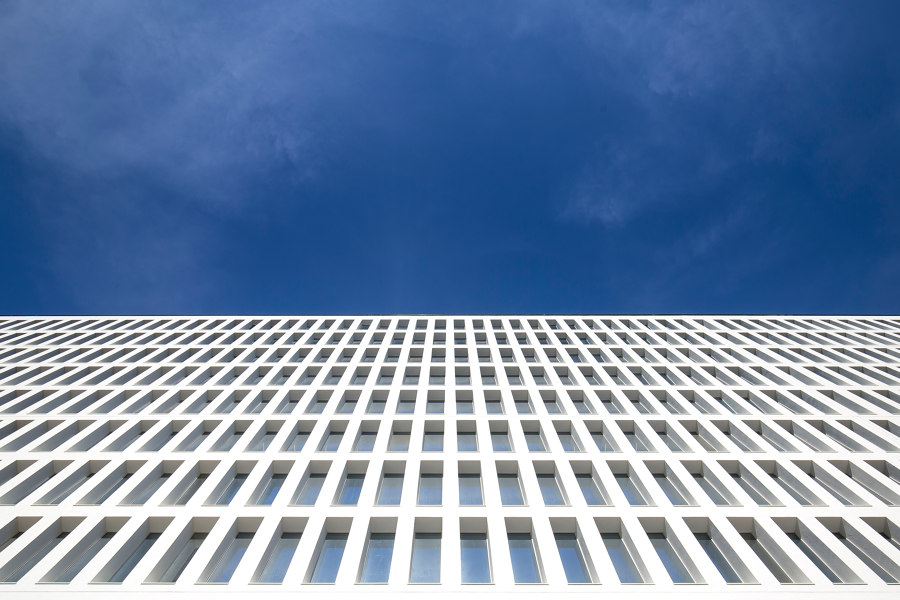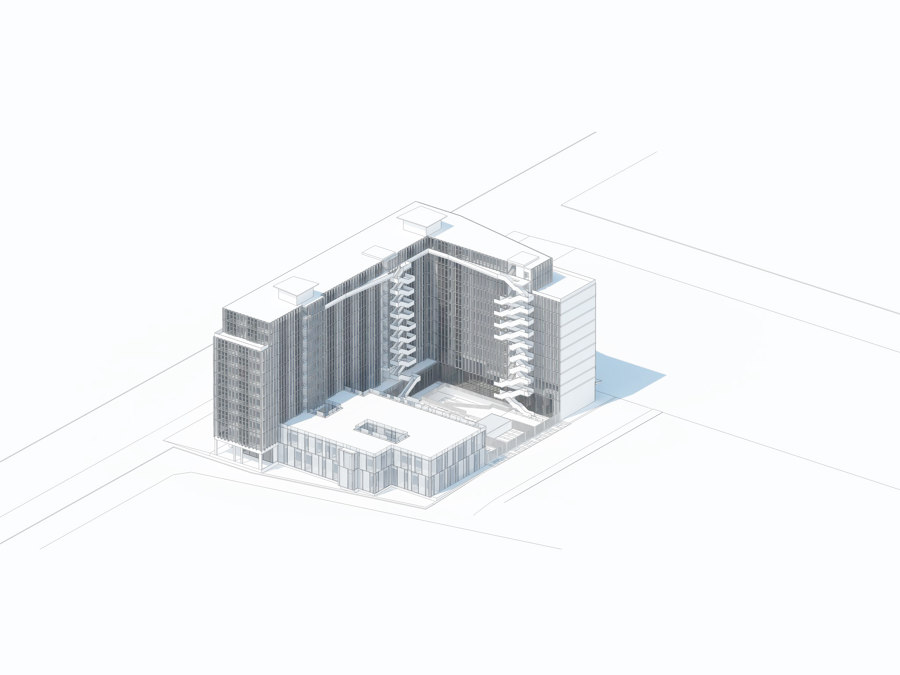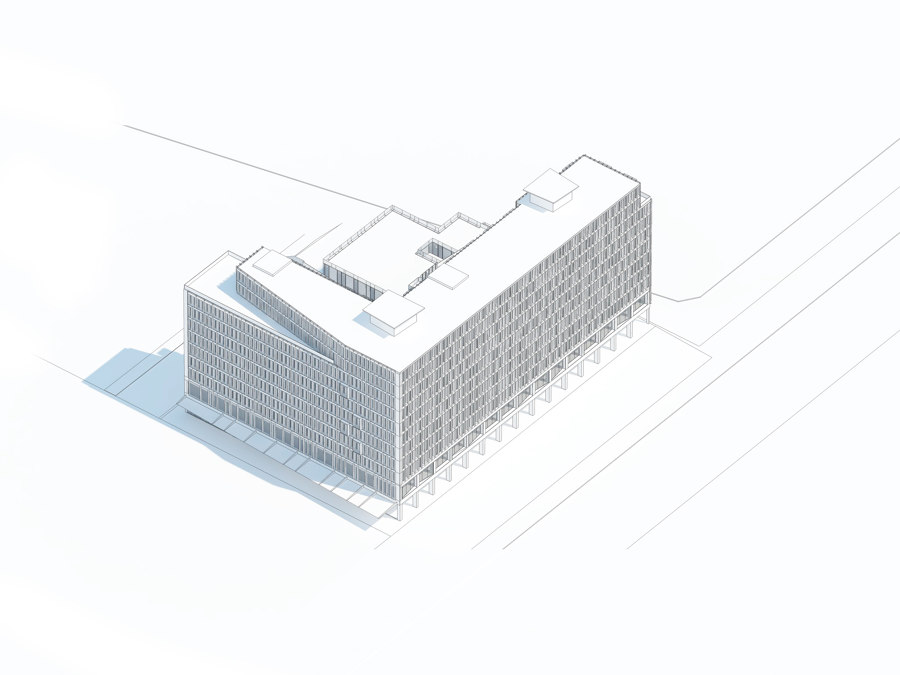Meeting a building where everything has changed around him over time.
It was the sentinel of a kind of boundary between territory, industrial settlements and infrastructures and the beginning of the urban city, in a change of scale and immediate perception, strong, almost alienating.
The city was the background, and the building was the threshold to enter from the northwest into the metropolitan city of Milan.
Over the years the roles of the areas in the city have been inverted according to a slow and courageous metamorphosis that has changed its use, destinies, perceptions, dimensions.
At the limits of that threshold where the building retains its role of “presence-pre existence”, a new urban and contemporary centrality was born and continues to develop.
From a boundary between areas, the building is almost at the center of that transformation, from a forerunner of urban plots, it now becomes the background of the new urban park and now urban perspective between the two squares: Repubblica and Gae Aulenti.
His destiny could have been the one to develop an emulation of the new contemporary language and be part of the whole, thus losing his identity and his role.
He chose a more courageous vision, a project that could emphasize his “presence-pre existence” role and at the same time, through the instrument of dialogue with his new context, he could affirm his precise identity both urban and architectural.
Each elevation, from the "public" to the "Intimate" of the court, takes on a materical and linguistic dimension that relates primarily to its new urban role (urban boulevard / viale Liberazione, square / urban park / via Melchiorre Gioia ) that is declared on the corner where the two urban landscapes meet, where the spaces expand and compress, where the sky becomes from natural to artificial reflected by the Varesine towers.
Rhythm, sequence, matter, color, volume that is now excavated in an obsessive bas-relief, white and infinite, is now extruded into a variable series of blue bow windows. Now it is structured among climbing stairs and vertical alternations of reflections, transparency and opaque materials.
The intention was to reinforce the nature of the building constructed with an intense and repetitive structural pattern and that we took as a pentagram on which to lean also for the elevation where we chose not to pursue gestures or stratifications of volumes or languages foreign to the building and place but to be part of it, indicating simple traces of this "vertical" growth.
The Corner therefore takes its name naturally from its foundational design idea, to make it clear that the angle of a building in the city can and must be a point of narration of the city, of its time between the times, of its perceptive relationship with the context.
Architecture must speak to us, in the present time and in future time, it must declare some choices that should be beyond the purely aesthetic question because they belong to the history of a city and therefore to the history of the men who participate in their construction and development.
The project must be a responsible and visionary act. The Corner dialogues with the light of Milan, with its sky, with its compressed and dilated perspectives, with its new horizons.
We brought the park of the "Trees" to the foot of the building, in some way we let it in by creating a porch and a completely mirror shelter, capable of eliminating for a few moments the physical limit between inside and outside between public and private, between collective dimension and intimate dimension.
The project is a perceptive system of reality and the relationship between light and shadow that brings around a kaleidoscope of changing effects that measure the time of day, of weeks, of months of the year.
Generously recreates with its new volume a crowning made of linear, punctual terraces, small open courtyards and a large courtyard imagined as an urban playground between mechanical means and convivial areas.
The nineteenth-century European and American city of the first New York imagined in the urban corners and in its representative buildings a kind of entrance door, of urban thresholds that brought to the attention the special points of the city. Today The Corner emphasizes with its identity the new urban centrality of Milan, accompanied by contemporary buildings and a large "library of trees".
Design team:
Architectural urbanistic, preliminary, definitive and landscape design: Atelier(s) Alfonso Femia
Architect in charge: Alfonso Femia
Coordination: Simonetta Cenci
Structural engineering: FOR engineering
Services engineering: FOR engineering
Safety during the design and execution phases: Atelier(s) Alfonso Femia AF517 / FOR engineering Corrado Vaschetti
Main Contractor: CGG - Gilardi Costruzioni
Poject and execution manager: Alessandro Bellus
Design team: Alessandro Bellus, Simonetta Cenci, Marco Corazza, Alfonso Femia, Vanesa Carbajo Fernàndez, Andrea Lucchi, Matteo Luciani, Vera Messana, Francesca Zampetti
Artistic direction: Alfonso Femia
Space Planning & Interior Design (Internazionale FC): DEGW | Lombardini22
Plan: Riqualificazione dell’edificio di Generali Redevelopment of a building located at the corner of Viale Liberazione and Via Melchiorre Gioia in Milan
